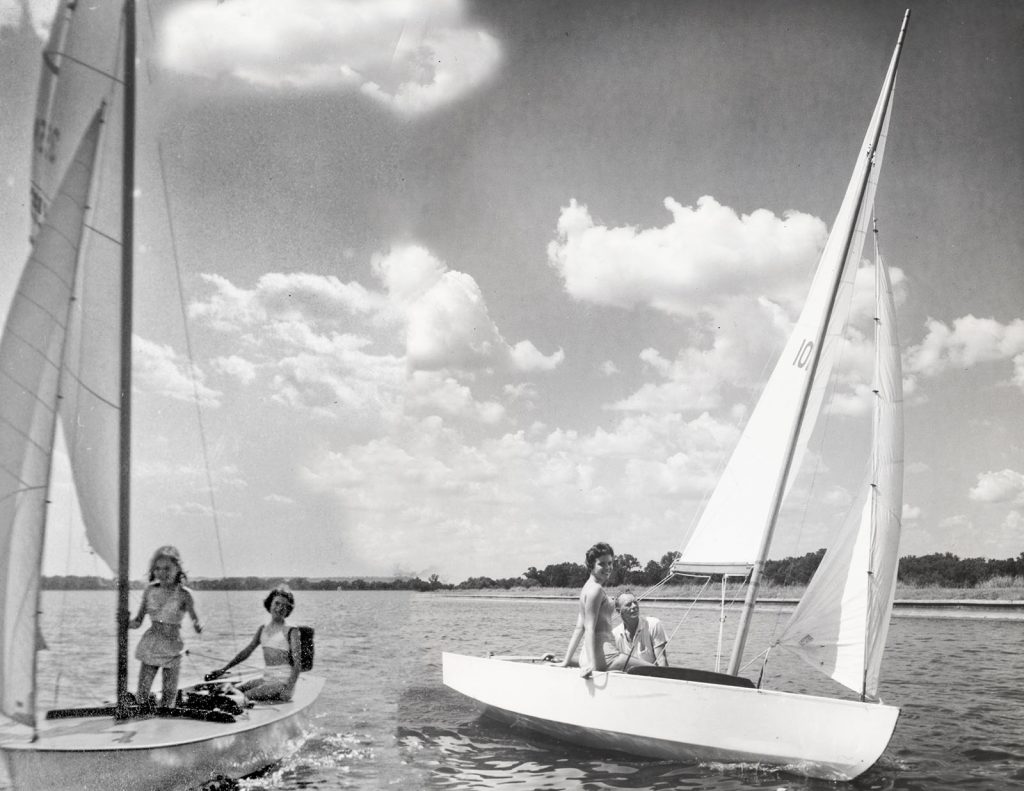I grew up on a sailboat (I’m standing in the left image and sitting in the right). My Dad loved to compete in just about everything. He raced bicycles chalking up records which were unbroken for years; he boxed for the Golden Gloves; he played pool with Minnesota Fats; and he raced sailboats. At one time he was ranked 6th in the world in Snipe class sailboat racing. He built his own Snipe sailboat in our garage when I was in grade school. Snipes are mainly a racing boat, and at that time, Snipes were the largest class of all classes of sailboats in the world. That means there were lots of racing opportunities including regattas.

We belonged to a private yacht club on Mohawk lake in Tulsa. The club hosted a race every Saturday as well as a yearly regatta.I started crewing for my dad at a young age, probably about 6th, grade. The crew’s job is to manage the jib, keep the boat as level as possible when it would heel, be very active on the turnabouts, and rescue the boat if it started to capsize.
The art of racing is all about details, such as, keeping our sails set perfectly as to hold the maximum amount of wind possible every second. This is primarily the crew’s job and takes the most time. It is managed by holding the jib rope (instead of cleating it) and feeling the wind shifts by the change in pull from the rope and then let the sail in or out to compensate for the wind shift. You can tell by looking at the jib if it is operating ideally. You keep the boat flat by constantly doing sit ups off the side of the boat keeping your feet hooked under a rope designed for this purpose. You rescue the boat from capsizing by jumping over the side while holding onto the jib stay and standing on the center board. You are now entitled to receive you Sailing 101 certificate.
You are probably asking yourself “what does the captain do?” He/she does lots of stuff besides strategizing. Kansas City was the most exciting regatta I ever crewed. There were lots of boats (maybe 50} and the wind gusts were very strong. I had to jump off the boat more than once to prevent capsizing. We were leading the race from the beginning. We were still leading on the last leg which was a run. A run is when the wind is directly behind you.You want your sails perpendicular to the wind behind you. That is no problem implementing this with the main sail because it is on a boom. It is a problem with the jib because it is attached with a rope. You use what is called a ‘whisker pole’ to hike it vertical. You do not heel on a run because there is no wind pressure from the side. However. If the wind is strong enough you can plane. When the wind is strong enough it lifts the boat to the top of the water (like an airplane taking off). Your speed suddenly picks up and you can’t help but yell “YA HOO’. It is such thrilling fun.
So, we are almost to the finish line and start plaining and we are yelling our heads off with glee. Suddenly dad says “look at that mast bend’. I look up and then ‘KA-PLUNK’. The mast breaks in two and we are dead in the water about 100 feet from the finish line. Dad jumps up grabs the limp main sail and yells to me “help me”. So, I jump up and grab another part of the limp sail and we hold our hands above our head. The boat is facing backward and it starts slowly moving in that direction. Before we can cross the finish line, two boats pass us. But we do make it across the finish line backwards and with a broken mast placing 3rd. What a competitor he was.
